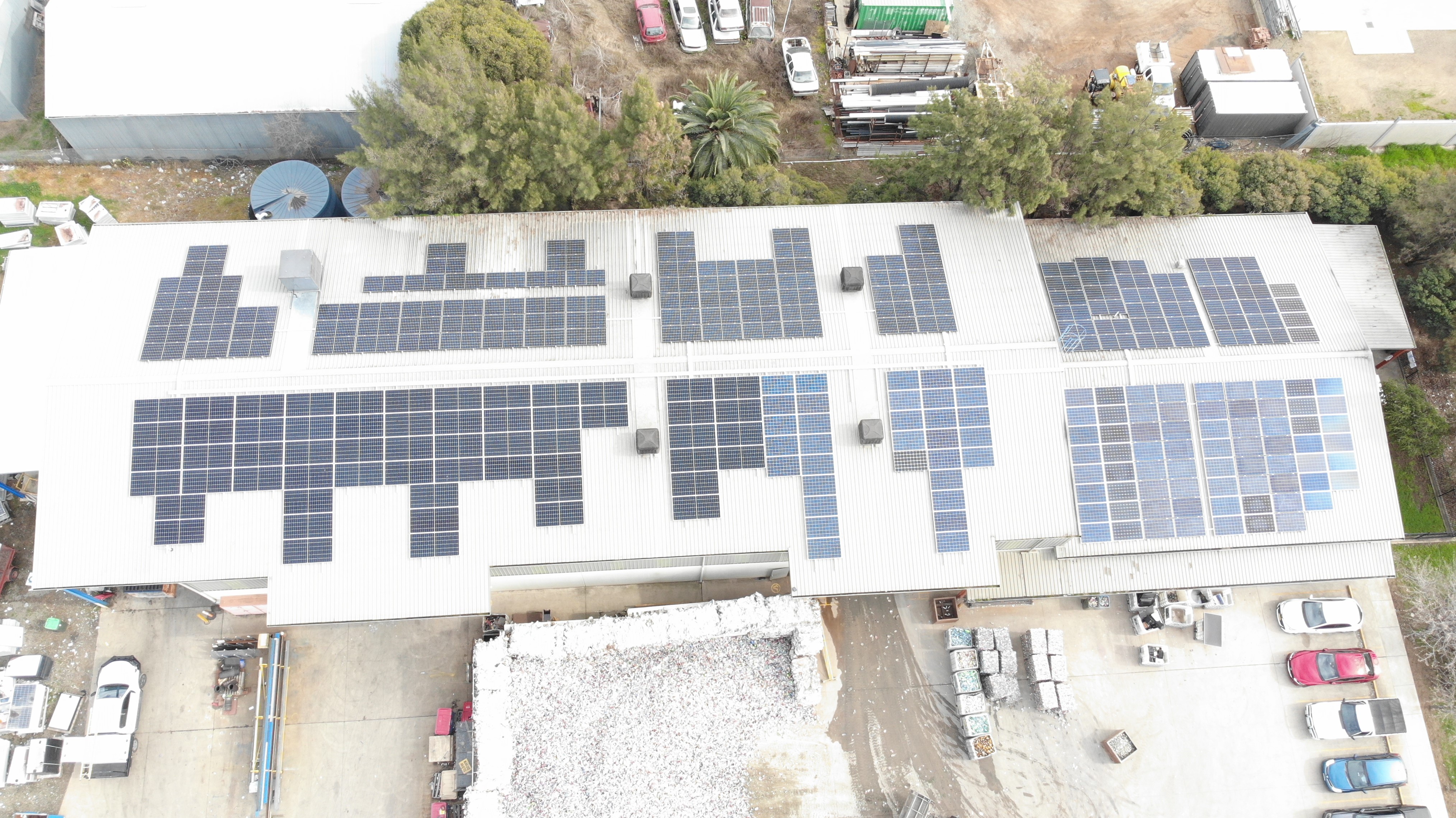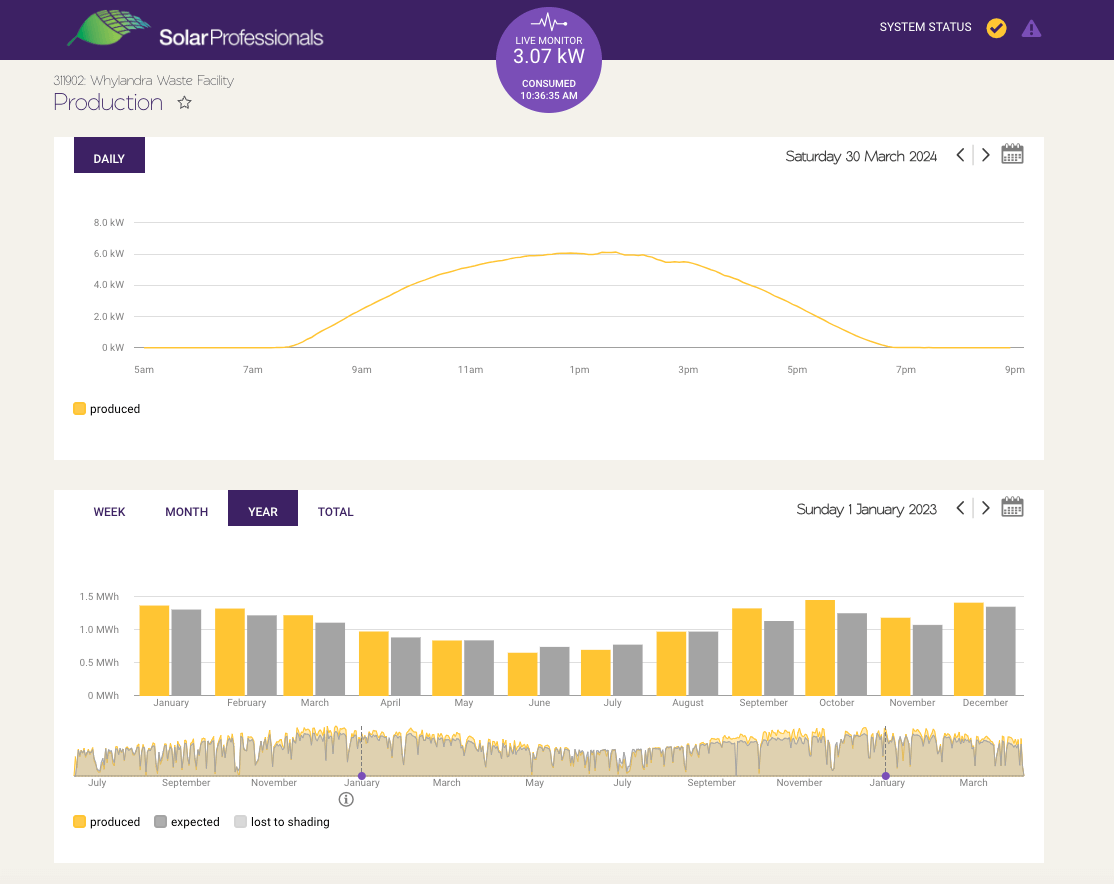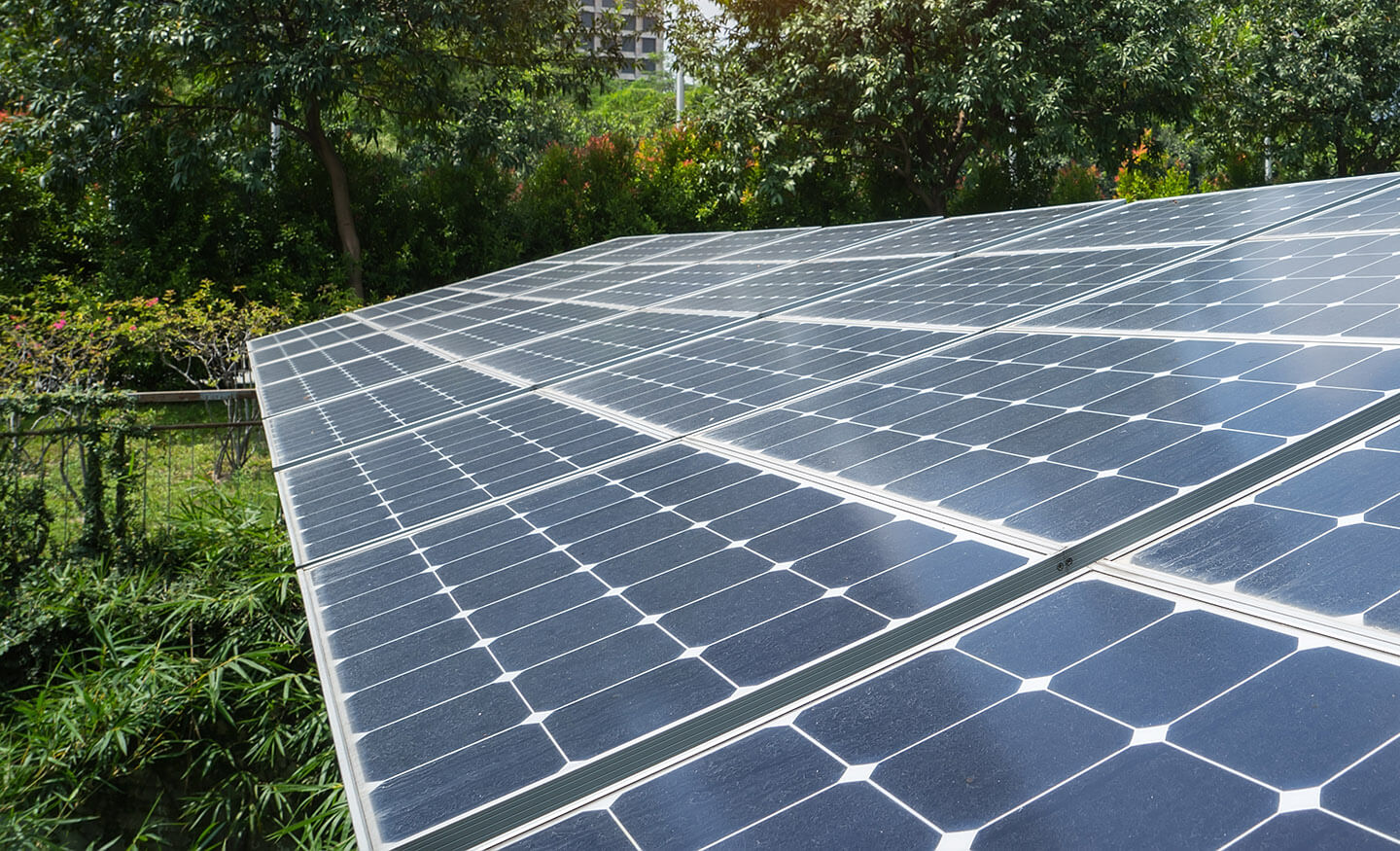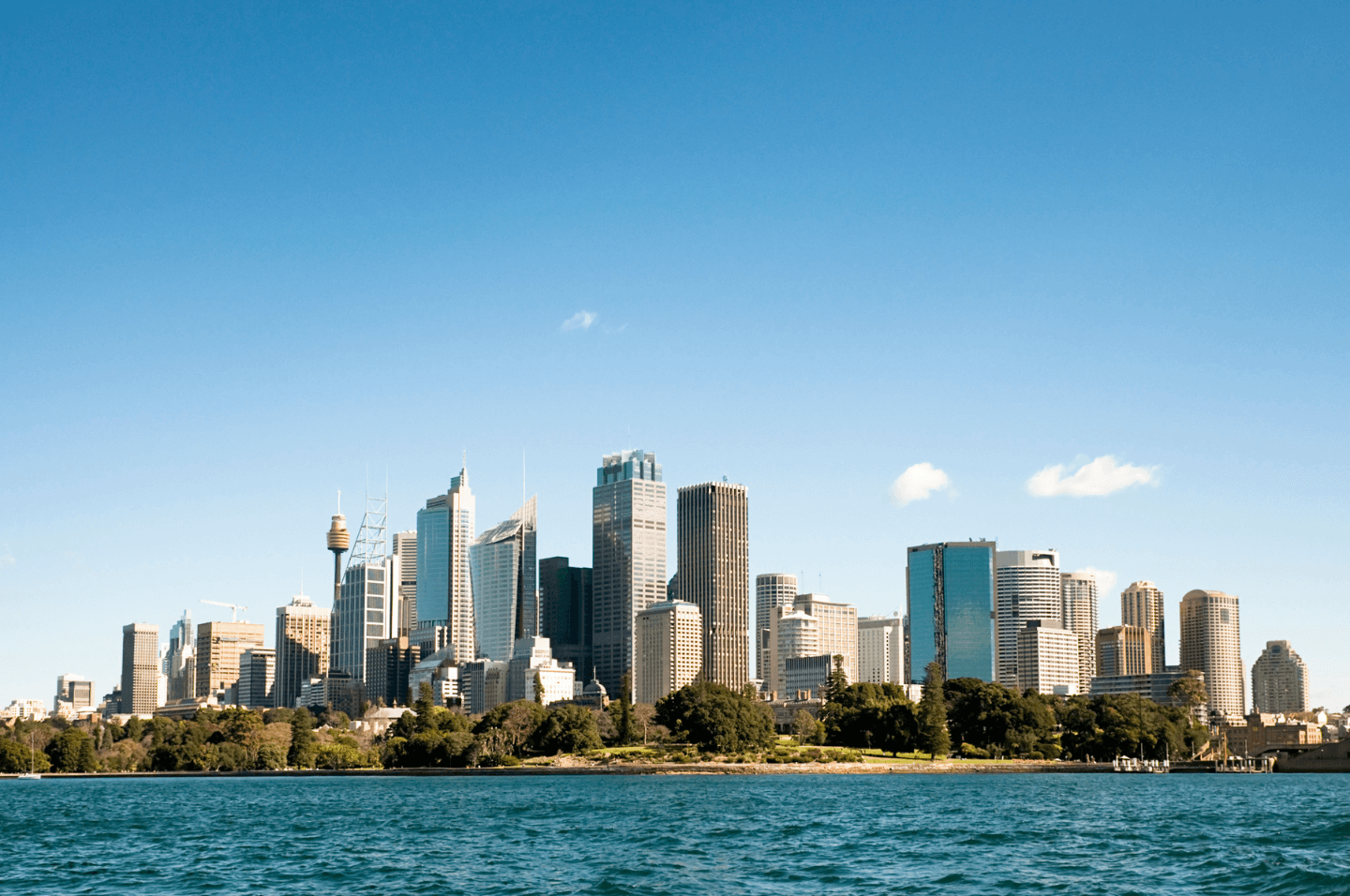When it comes to renewable energy, NSW is forging ahead, with about a third of NSW homes and small businesses having rooftop solar. Installing the latest solar technology comes at a cost, with recent research finding that solar panels from photovoltaic (PV) systems are emerging as a growing source of waste.
The NSW Government’s Sustainability Advantage team recognised this as a significant ‘circular economy’ opportunity. And it’s one that’s now been realised, with the commissioning of Australia’s largest demonstration of solar panel reuse at Wagga Wagga.

An Australian first
The Kurrajong Waste and Recycling facility at Wagga Wagga now has a full scale 100 kW solar system comprised entirely of panels previously destined for the rubbish heap.
You can see the slight difference in colours in the photograph due to the different panel types collected from across the state.
People replace solar panels for a range of reasons. They may have a single damaged panel, but replace the whole system, or they might need to repair or replace their roof and decide to ‘upgrade’ their solar system at the same time. Whatever the reason, many perfectly good panels end up in landfill.
Blue Tribe estimates that Australia will accumulate up to 1 million tonnes of solar panel waste by 2033 — if laid end-to-end, these PV panels would encircle the earth 3 times.
The successful pilot
Sustainability Advantage teamed up with the Blue Tribe Company, Dubbo Regional Council, solar installer Solar Professionals, and the CSIRO to address this waste problem. Out of this collaboration Second Life Solar was formed. With funding from the NSW Environment Protection Authority, they developed an innovative testing method to evaluate the condition of used solar panels and built an 8-kW second-hand solar garden at Dubbo Council’s Whylandra Waste and Recycling Centre.
This successful pilot provided the evidence for them to scale up to commercial size – 10 times larger than the pilot in Wagga Wagga.
The Dubbo plant successfully showcased the cost-benefits of reused solar panels with CSIRO addressing the technical challenges and testing the second-hand panels for viability and monitoring performance. Tests show the Dubbo panels are performing at 104% – as good, or better than, new.

A commercial product
With this evidence, and with further funding from the NSW EPA, the Second Life Solar project has now installed a full-scale 100 kW demonstration system at the Kurrajong Waste and Recycling facility at Wagga Wagga.
‘‘The pilot at Dubbo was about giving solar panels a second life by diverting them from landfill and using them to continue to generate clean energy and help us reach NSW’s net zero targets sooner,” says James McGregor from Blue Tribe. “But, the mission was to help create a circular solar industry and develop a pathway to reuse solar panels at scale. The new plant at Wagga Wagga is the first step in realising a truly commercial operation.”
This system is reusing about 300 PV panels that would have otherwise ended up in landfill.
Blue Tribe worked with the CSIRO to set up a test rig to be able to test second-hand solar panels. In its first field trial they found that 89% of the panels collected for disposal were still fully functional.
The goal is to launch a new secondary marketplace that will divert 10,000 tonnes a year of reusable end-of-life solar panels by 2030.

A fully circular industry
While much of the conversation surrounding end-of-life solar panels has focussed on recycling, it is important to consider a fully circular solar industry that includes reuse and remanufacturing. The plan is that eventually when the panels finally reach the end of their serviceable life, components such as silicon, silver, copper, aluminium and glass could be recycled in the manufacture of new solar panels.
Second Life Solar is continuing to develop solutions to solar panel waste, including exploring the opportunity to remanufacture new solar panels from old ones and a project to recover silicon, silver, copper and aluminium.
A fully circular solar industry has the potential to generate significant economic benefits and jobs while reducing supply chain risks. Solar panel reuse allows businesses and the Government to achieve net zero, circular economy and renewable energy outcomes in a single project.
Second Life Solar has been recognised by leading industry groups, winning the World Wildlife Fund's (WWF) Impactio Challenge, and as a finalist in The Circle Awards AUS & NZ 2022 in the 2022 NSW Banksia Awards.

‘If we’re to accelerate the transition needed to address the climate crisis, we need to collaborate across government, industry and research to find innovative solutions. This project exemplifies what can be achieved when we do just that.’ Celia Tesoriero, Sustainability Advantage Manager
